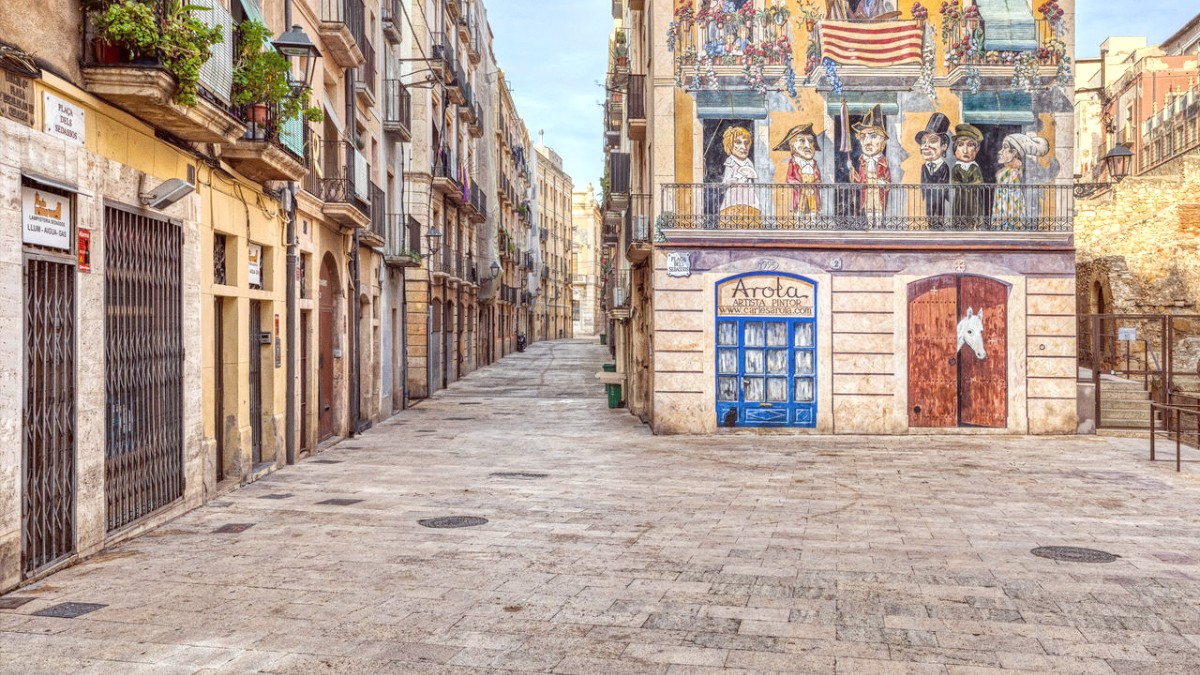
Catalonia, Spain
This city on the Costa Daurada, or Golden Coast, presents a distinct travel experience. It combines centuries of history with the relaxed pace of coastal Spanish life. Embark on a journey filled with discovery, flavor, and seaside calm. Tarragona represents a rewarding destination for those seeking history, sun, and authentic local culture.
Tarragona merges historical depth with coastal leisure, making it a compelling choice for diverse travel preferences. Its relaxed ambiance contrasts with the historical grandeur.
The city's UNESCO recognition underlines its significance, offering visitors a chance to explore a rich past within a beautiful setting.
Tarragona sits in the autonomous community of Catalonia, Spain. It serves as the capital of the province of Tarragona, positioned along the Costa Daurada by the Mediterranean Sea. The city lies approximately 100 kilometers (62 miles) south of Barcelona, Spain's second-largest city. Its geographical coordinates are roughly 41.1167° N latitude and 1.2500° E longitude. The city’s landscape includes a series of hills that extend down to the coast, presenting both urban centers and sandy beach areas within Tarragona's bounds.
The city's urban layout mirrors its history. The Old Town, or Part Alta, stands atop the hills, encompassing many Roman and medieval structures. Newer areas extend towards the coast and inland, featuring modern infrastructure and residential zones. The Mediterranean Sea forms the city’s eastern border, offering numerous beaches and a busy port. This port functions as a commercial hub and a stop for cruise ships, linking Tarragona to maritime trade and tourism routes. This blend of hills, sea, and urban development provides Tarragona a distinct physical identity.
The Golden Coast stretches along the city, revealing many more beaches and small towns. Tarragona functions as a central point for exploring this wider region.
Inland, the scenery transitions to agricultural plains and then to the mountainous areas of the Priorat and Montsant wine regions.
This varied geography supports different activities, from beach holidays to hiking and wine tourism, broadening visitor experiences.
Rivers, like the Francolí, which meets the sea at Tarragona, also play a part in the local ecosystem and historical narrative.
The city's position presents a balance of urban life, historical depth, and access to natural beauty, positioning it as a compelling destination.
The city’s elevation provides natural viewpoints that present sweeping vistas of the sea and the Roman ruins. The proximity to Barcelona renders Tarragona easy to reach. This location additionally positions it as a popular destination for visitors seeking a quieter, historical experience while remaining connected to major transport hubs.
Its varied terrain presents a mix of urban centers and sandy beach areas. The diverse geography supports a range of activities, from beach relaxation to hiking and wine tourism.
The combination of hills, sea, and urban development forms Tarragona’s unique physical identity, inviting exploration of both its historical core and natural surroundings.
A walk along the city's higher points offers appreciation for the blend of urban development, historical structures, and coastal beauty.
Tarragona boasts a long and rich history. It gains renown mainly for its extensive Roman heritage. Founded as Tarraco, it ascended to become one of the most important cities in Roman Hispania. It served as the capital of the Roman province of Hispania Citerior. This profound Roman influence renders Tarragona a significant site for historians and travelers.
The city's archaeological ensemble, including the Roman Amphitheatre, Circus, and Walls, received designation as an UNESCO World Heritage Site in 2000. This recognition highlights its global importance in preserving Roman architectural and urban planning examples.
The Roman presence in Tarraco began in the late 3rd century BC, serving as a military base and later a major administrative and cultural center.
Evidence of the Roman past exists everywhere, from the forum and theater to the visible amphitheater, circus, and walls, linking visitors to ancient civilization.
Beyond the Roman era, Tarragona saw Visigothic rule, Moorish conquest, and Christian Reconquest, each leaving its unique mark on the city's identity.
The modern city continues to preserve and celebrate this multi-layered past. Efforts to excavate and conserve Roman sites remain ongoing. The local culture, deeply rooted in Catalan traditions, also mirrors these historical influences.
Tarragona presents a blend of historical exploration, beach relaxation, and authentic Catalan experiences. Visitors discover a diverse range of activities within its bounds and the nearby region.
The city’s allure derives from its capacity to deliver a comprehensive travel experience. For history enthusiasts, the UNESCO-listed Roman sites afford endless discovery. The Roman Amphitheatre, perched above the sea, presents a dramatic backdrop for understanding ancient spectacles. The Roman Circus, though partially concealed, displays the scale of Roman entertainment. The National Archaeological Museum of Tarragona further clarifies this understanding with its collections.
UNESCO-listed Roman sites, including the Amphitheatre and Circus, invite deep historical discovery.
Tarragona’s beaches, from Platja del Miracle to Platja Llarga, offer ample opportunities for sunbathing and swimming.
The Old Town teems with character, boasting a lively gastronomic scene and unique traditions like "castellers" during festivals.
For those seeking coastal leisure, Tarragona’s beaches provide abundant opportunity for sunbathing and swimming. Platja del Miracle sits near the city center, offering easy access. Further along the coast, Platja de l'Arrabassada and Platja Llarga present larger, quieter spaces. These beaches present a pleasant contrast to the historical sites, facilitating relaxation after a day of exploration.